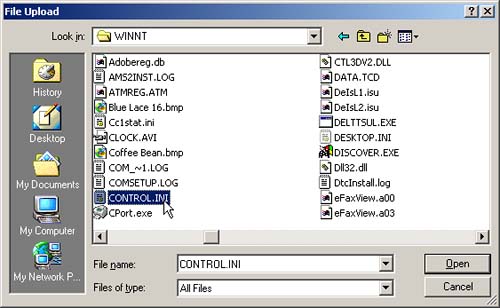19.7 File Upload Controls
| HTML Element: <INPUT TYPE="FILE" ...> (No End Tag) Attributes: NAME (required), VALUE (ignored), SIZE , MAXLENGTH , ACCEPT , ONCHANGE , ONSELECT , ONFOCUS , ONBLUR (nonstandard) This element results in a filename textfield next to a Browse button. Users can enter a path directly in the textfield or click on the button to bring up a file selection dialog that lets them interactively choose the path to a file. When the form is submitted, the contents of the file are transmitted as long as an ENCTYPE of multipart/form-data was specified in the initial FORM declaration. For multipart data, you also need to specify POST as the method type. This element provides a convenient way to make user-support pages, with which the user sends a description of a problem along with any associated data or configuration files. Core Approach
Unfortunately, the servlet API provides no high-level tools to read uploaded files; you have to call request.getInputStream and parse the request yourself. Fortunately, numerous third-party libraries are available for this task. One of the most popular is from the Jakarta Commons library; for details, see http://jakarta.apache.org/commons/fileupload/.
For example, the code in Listing 19.11 creates a file upload control. Figure 19-20 shows the initial result, and Figure 19-21 shows a typical pop-up window that results when the Browse button is activated. Listing 19.11 Example of a file upload control<FORM ACTION="http://localhost:8088/SomeProgram" ENCTYPE="multipart/form-data" METHOD="POST"> Enter data file below:<BR> <INPUT TYPE="FILE" NAME="fileName"> </FORM> Figure 19-20. Initial look of a file upload control. Figure 19-21. A file chooser resulting from the user clicking on Browse in a file upload control on Windows 2000 Professional. |
EAN: 2147483647
Pages: 194

